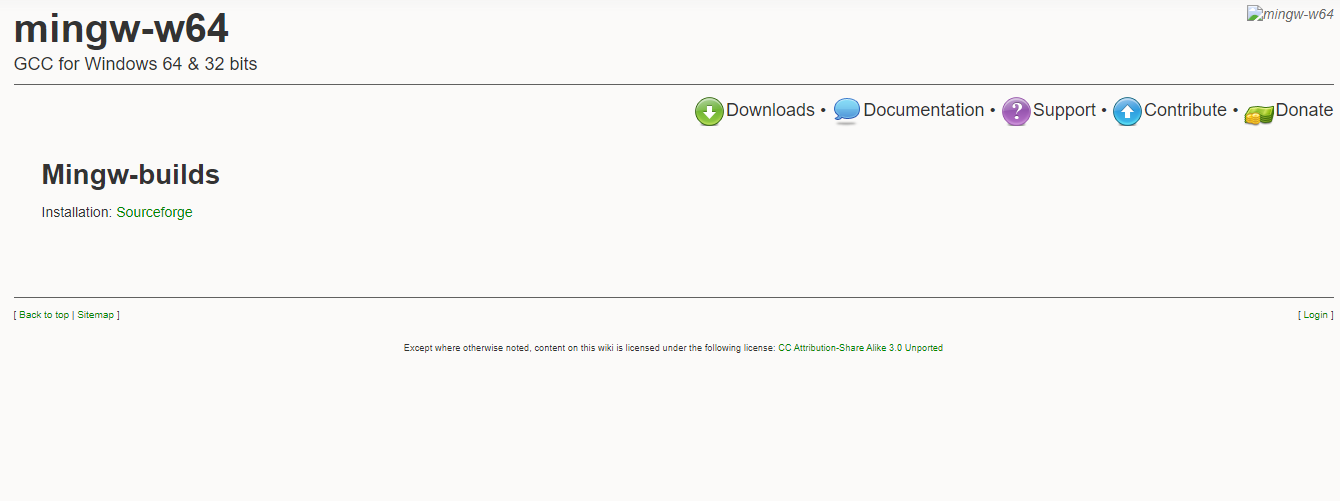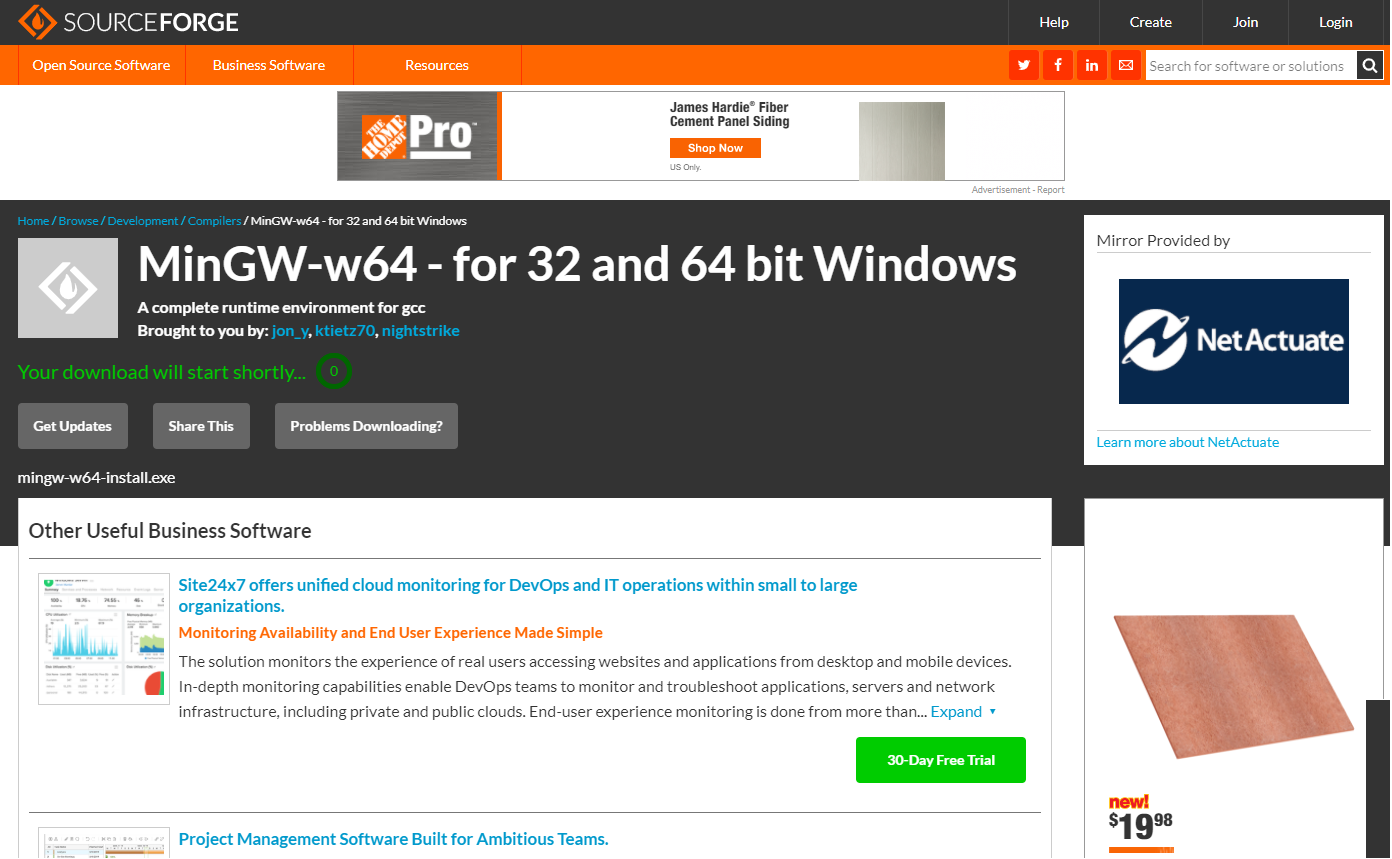
- #Mingw gcc compiler for windows install
- #Mingw gcc compiler for windows 64 Bit
- #Mingw gcc compiler for windows download
- #Mingw gcc compiler for windows mac
- #Mingw gcc compiler for windows windows
HAccelerators = LoadAccelerators(hInstance, MAKEINTRESOURCE(IDR_ACCELERATOR)) MessageBox(NULL, TEXT("Error creating main window."), TEXT("Error"), MB_ICONERROR | MB_OK) HWnd = CreateWindowEx(0, MainWndClass, MainWndClass, WS_OVERLAPPEDWINDOW, CW_USEDEFAULT, CW_USEDEFAULT, MessageBox(NULL, TEXT("Error registering window class."), TEXT("Error"), MB_ICONERROR | MB_OK) Register our window classes, or error. GetSystemMetrics(SM_CXSMICON), GetSystemMetrics(SM_CYSMICON), Wc.hIconSm = (HICON) LoadImage(hInstance, MAKEINTRESOURCE(IDI_APPICON), IMAGE_ICON, Wc.lpszMenuName = MAKEINTRESOURCE(IDR_MAINMENU) Wc.hbrBackground = (HBRUSH) (COLOR_BTNFACE + 1) Wc.hCursor = (HCURSOR) LoadImage(NULL, IDC_ARROW, IMAGE_CURSOR, 0, 0, LR_SHARED) LR_DEFAULTSIZE | LR_DEFAULTCOLOR | LR_SHARED) Wc.hIcon = (HICON) LoadImage(hInstance, MAKEINTRESOURCE(IDI_APPICON), IMAGE_ICON, 0, 0, LPCTSTR MainWndClass = TEXT("Win32 Test application") Int WINAPI WinMain(HINSTANCE hInstance, HINSTANCE hPrevInstance, LPSTR lpCmdLine, int nCmdShow) The following is our WinMain function, which I will disect and explain in the following sections: // Our application entry point. Our application contains a fairly vanilla Window, typical of your usual âHello Windows!â tutorial, but with a few additions which you wonât get by default (if youâre not familiar with the structure, Iâd recommend checking out theForgerâs Win32 tutorial). The Applicationâs WinMain ProcedureĪ good place to start would be with our WinMain procedure.
#Mingw gcc compiler for windows install
Installation under other operating systems will vary, for example under the Fedora Linux distribution, you can run â yum install mingw32-gcc mingw32-gcc-c++ mingw32-w32apiâ to install the necessary packages.
#Mingw gcc compiler for windows windows
No other components are needed in order to build Windows applications in C, but youâll probably want to install the C++ compiler as well if you intend to mix your C with C++. When setting up MinGW using this method, the C compiler will be installed by default. If not, Windows users will find that it is covered very well in the MinGW âGetting Startedâ Wiki. It is assumed that you already have MinGW installed on your PC.
#Mingw gcc compiler for windows 64 Bit

#Mingw gcc compiler for windows download
Alternatively you can download a MinGW Win32 Application source release. If you have Git installed, you can get the sample code by running â git clone . This is much like what the Visual Studio Application Wizard will generate for you, and you can use my application as a template for your own applications.

Itâs not intended to be the worlds best example of user interface design, but rather an attempt to demonstrate some of the functionality which can be achieved using MinGW with the minimum amount of code. In this article, I will build a basic Windows GUI application in C using MinGW and the mingw32-make utility.
#Mingw gcc compiler for windows mac
Whether youâre running Windows, Linux, Mac OS, or some other OS, I will show you how use MinGW to create professional quality GUI applications targeting Microsoft Windows. MinGW also supports cross compilation, for example allowing you to build Windows applications using a Linux based system. MinGW is a native Win32 port of the open source GNU Compiler Collection, and can be used to write applications targeting Windows in languages such a C and C++ (see the MinGW web site for further details of the supported programming languages). Building Win32 GUI Applications with MinGW Transmission Zero Building Win32 GUI Applications with MinGW


 0 kommentar(er)
0 kommentar(er)
